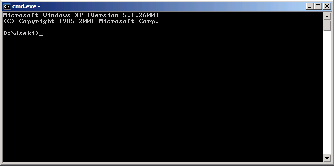
 |
|
|
DownloadMyGoGrinderYou can download the latest version of MyGoGrinder from the
MyGoGrinder project page. JsekiTsumegoNew work on another program, which I found interesting: JsekiTsumego by Ross Werner. His last published version was JsekiTsumego 0.2 and then he stopped the development (apparently) - that was in 2009. I dug it out and found it being buggy (somewhat alpha). Several hours of studying the code brought some results: JsekiTsumego 0.5.0 (not anymore regularly crashing - I hope no crash at all). Jseki Tsumego is mainly thought for go player novices: it presents basic problems about life and death, which don't have complicated defense moves. The question is always: what is the best result, the player to move can get? The program and problems don't handle Ko for getting a Seki or Ko for more points against a Seki or similar. Also not built in are endgame questions. Jseki Tsumego uses flashcards (Leitner system / Spaced Repetition Algorithm) to present the problems. In contrast to usual tsumego programs the pupil is not asked to put a stone, but shall determine the status of an enclosed group: alive, dead, unsettled, ko, seki. Available are 10 categories with 29 internal files and 564 questions ("cards"). You can create and load additional sgf, but these need to stick to rules:
The default category is currently "Beginner1", but this can easily be adjusted when selecting a category (menu "Selection", "Change selection" and then button "Add category ..."): set the check mark for default. The categories are:Beginner(1, 2, 3), Advanced(1, 2, 3), Master, Grandmaster, Ko, Tesuji.  There are still mistakes possible in the code and also in the sgf files (in the program). If you think, the expected answer doesn't fit to the shown situation, it is possible, that I made a mistake. Use an SGF-editor to play through the variants. A bug shows it's origin in a console. Start JsekiTsumego there with PATH/TO/YOUR/java.exe -jar JsekiTsumego.jar (don't use javaw.exe, as you will not see error messages there).
RequirementsMyGoGrinder needs Java 1.5 or higher to run. |